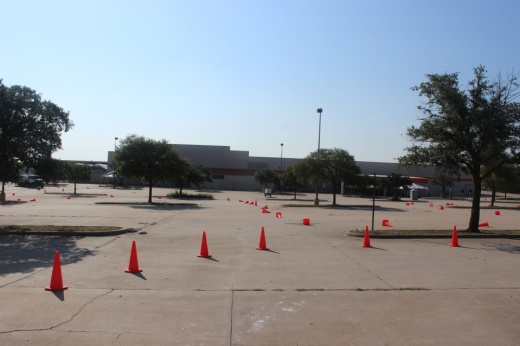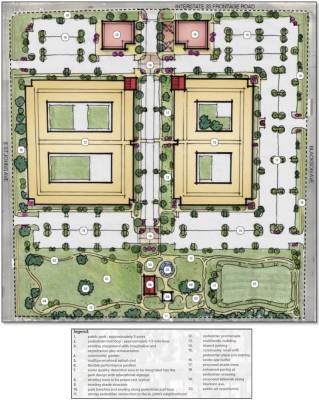City staff chose the plan from Greystar and the Housing Authority of the City of Austin in early July as the top option for the site's transformation out of several submissions. The plan came about following years of community engagement that crafted guidelines for what the renovated St. John Site should include and with city efforts to craft a project that maximized the uses of its vacant parcels.
“Too often, families in St. John have either been left behind by the city or pushed out by gentrification,” District 4 Council Member Greg Casar said in a statement. “With this project, we’re demanding something different. We’re building housing that will keep families in the neighborhood, rather than pushing them out. We’re bringing parks, jobs, and services to the community while also creating more affordable housing options. If we succeed, this will be an example of what we can do across Austin.”
The centerpiece of the Greystar proposal is a 560-unit housing complex with a 50-50 split of affordable and market-rate apartments, including studios and one-, two- and three-bedroom spaces mixed together throughout the buildings. The initial plan also calls for a tripling in size of St. John Park on the site's eastern edge and the addition of 15,000 square feet of retail and nonprofit space.
Following the release of the outline this month, Casar told Community Impact Newspaper that while he was glad to see the project reaching actionable stages after many years of work, he also hoped final negotiations between the city and developers would result in more benefits added at the site. Additional direction on that front was the topic of council's discussions July 29 with both Casar and District 9 Council Member Kathie Tovo adding several items the city will seek to secure from the development team as the project moves along.
Top among the council members' requests for city negotiations with Greystar were commitments to an expansion of housing, including the number of affordable units, the number of multibedroom units, and "meaningful amount of affordable homeownership."
Officials also asked for more from the commercial and community-oriented pieces of the plan, including on-site child care, educational spaces, and more room for nonprofits and retail geared toward the neighborhood. Tovo said she does not want to see the site's future storefronts occupied only by "niche, high-end, luxury good stores."
“I hope that we can be really successful on the St. John tract of having commercial businesses on that redevelopment that actually serve the needs of the individuals who live there," she said. "My hope is that our community process will identify some neighborhood services and other kinds of businesses that are particularly filling gaps in that area or that are serving the basic needs of those who live there."
Several of those items were priorities or concerns shared by area residents leading up to and during council's late July session. Akeem McLennon, president of the St. John Neighborhood Association, said his involvement with the site and gathering local feedback has stretched back years. Prior to council's vote, he expressed a sense of relief on behalf of the community that Austin was reaching a turning point in the site's history that could finally result in a notable local asset on the underutilized land.
"There was kind of suspicion or pessimism that it would even get to this point because some of the longer-term residents had the feeling that the neighborhood had been kind of neglected up to this point. Especially during the point in time when it was used to store compost bins, it almost seemed like the city viewed the neighborhood as somewhere where they stored their trash," McLennon said. "I think there’s definitely a lot of excitement that we’re even at the possibility of something going there."
Residents speaking on the project July 29 also said they supported aspects of the plan including council members' emphasis on addressing displacement and preserving neighborhood history. Several comments centered on Casar's ask to ensure city Right to Stay and Right to Return programs for St. John residents who were or are being priced out of their homes are successful on-site.
“I really appreciate council members' effort to push and center displacement around the proposed changes as well as displacement for people like me who have previously been displaced," said Cherelle Vanbrakle, District 4's representative on the Austin African American Resource Advisory Commission. "I do feel that passing this is what the St. John neighborhood has needed and wanted for generations. This is a step in the right direction; we know that there's lots of work to be done."
Before the final vote July 29, Casar also noted the plan's success could serve as a model for the use of other city land for similar community-oriented developments. Greystar's proposal was picked by staff in part due to its financials, including its coverage of remaining city bond debt on the site and a lack of a need for a subsidy. In comparison to the scope and cost of recent city-subsidized projects, Casar called that fact a "significant win" for affordable housing.
“So often we’re choosing between investing in the community and gentrification, and we don’t want to be choosing between one or the other. Here we can keep people in place and improve something that we have too long neglected," he said.






